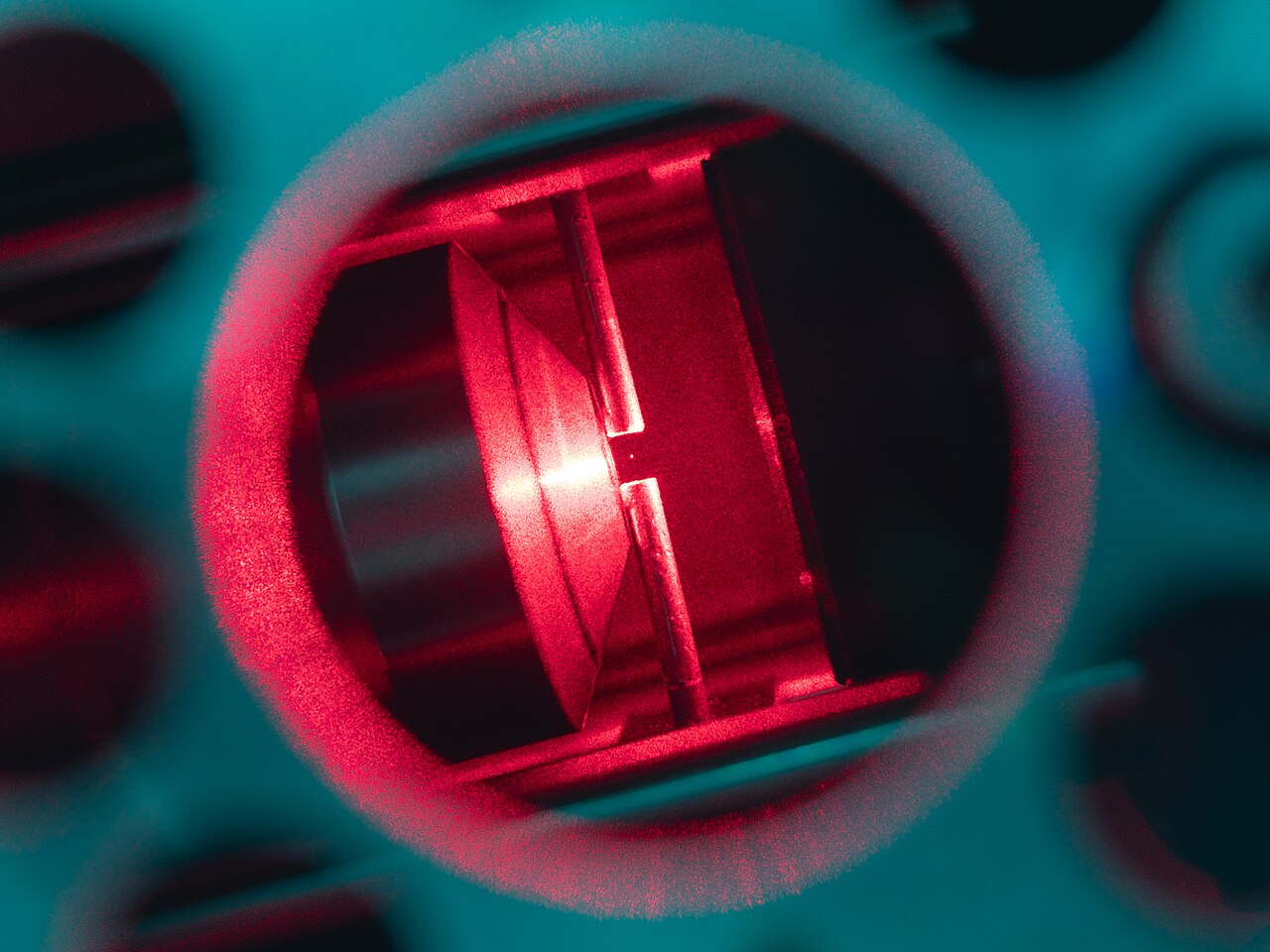Statistical physics address the uncertainty about the state of a system that arises when that system interacts with its environment but a new paper says that uncertainty in the thermodynamic parameters themselves — built into equations that govern the energetic behavior of the system — may also influence the outcome of an experiment.
The authors of a new paper argue it’s impossible to measure parameters like temperature, pressure, or volume precisely, both because of the limitations of measurement and the fact that these quantities change quickly. They recognized that uncertainty about those parameters not only influences information about the original state of the system, but also how it evolves.

Optical tweezers. Credit: Steven Hoekstra/Wikipedia CC BY-SA 4.0
It’s almost paradoxical, says Dr. Jan Korbel, a postdoctoral researcher at the Complexity Science Hub in Vienna. “In thermodynamics, you’re assuming uncertainty about your state so you describe it in a probabilistic way. And if you have quantum thermodynamics, you do this with quantum uncertainty. But on the other hand, you’re assuming that all the parameters are known with exact precision.”
If a cell needs to sense the temperature to carry out some chemical reaction, for example, then it will be limited in its precision. The uncertainty in the temperature measurement could mean that the cell does more work — and uses more energy. “The cell has to pay this extra cost for not knowing the system,” he says.
Optical tweezers offer another example. These are high-energy laser beams configured to create a kind of trap for charged particles. Physicists use the term “stiffness” to describe the particle’s tendency to resist being moved by the trap. To determine the optimal configuration for the lasers they measure the stiffness as precisely as possible. They typically do this by taking repeated measurements, assuming that the uncertainty arises from the measurement itself.
The authors offer another possibility — that the uncertainty arises from the fact that the stiffness itself may be changing as the system evolves. If that’s the case, then repeated identical measurements won’t capture it, and finding the optimal configuration will remain elusive. “If you keep doing the same protocol, then the particle doesn’t end up in the same point, you may have to do a little push,” which means extra work that’s not described by the conventional equations.
This uncertainty could play out at all scales. What’s often interpreted as uncertainty in measurement may be uncertainty in the parameters in disguise. Maybe an experiment was done near a window where the sun was shining, and then repeated when it was cloudy. Or perhaps the air conditioner kicked on between multiple trials.






Comments